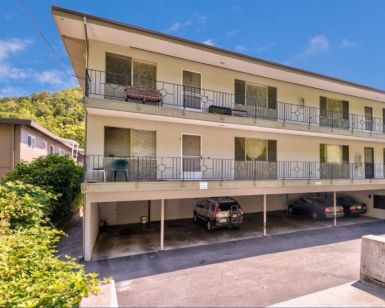San Rafael, CA – The government agency that sets affordable housing production goals for every Bay Area jurisdiction has notified the County of Marin of its draft assigned number of homes to meet the housing needs in unincorporated areas through 2030. The proposal is for 3,800 new units, almost 21 times more than the 180 units in the current eight-year cycle.
The Marin County Board of Supervisors in November submitted a letter to the Association of Bay Area Governments (ABAG) objecting to the increase. ABAG is responsible for distributing the required number of housing units to all Bay Area counties, cities and towns. It has said Marin needs to create 3,800 new homes to meet its Regional Housing Needs Allocation (RHNA) as part of its long-range plans. The County must meet its RHNA production goals by the end of the eight-year cycle that begins in 2023.
 ABAG sets regional housing goals in four categories of affordability, ranging from above average median income to very low income.
ABAG sets regional housing goals in four categories of affordability, ranging from above average median income to very low income. Staff members from the Marin County Community Development Agency (CDA) are beginning work on the next Housing Element Update of the Marin Countywide Plan for the years 2024-2032. Planners will provide an update to the Marin County Board of Supervisors during its regular meeting on January 26. More information will be released January 21 when the meeting agenda is released. Residents will be able to participate in the online session or watch the webcast.
“We know there is a real need for affordable housing in our community, and we are trying to meet that need in many different ways,” said CDA Planning Manager Leelee Thomas. “For instance, conversion of existing properties to affordable housing and making it easier to add more accessory dwelling units to existing properties can help us reach those numbers in addition to building new affordable homes within our existing communities. Those would help us toward the RHNA goals.”
Marin’s 2015-2023 Housing Element shows how a range of housing choices can accommodate diversity of incomes, lifestyles and workforce needs, even in a slow-growing county such as Marin. The document identifies sites appropriately zoned for future housing development in unincorporated Marin, including emergency shelter and transitional units.
RHNA sets its housing goals in four categories of affordability: homes that are affordable to households earning above-moderate-, moderate-, low-, and very-low incomes. The thresholds are determined by the area median household income, or AMI, which in Marin is $143,100 for a household of four. More details about who qualifies for those categories is on the Marin Housing Authority website.
By the end of 2019, Marin had produced about 250% of needed above-moderate income housing (greater than 120% AMI) and was maintaining the needed momentum to reach its production goal for low-income housing (30%-50% AMI), currently at 78%. However, the County has more work to do to achieve its production goals for housing affordable to moderate-income (50%-80% AMI) and especially very-low income (below 30% AMI) households. As of the end of 2019, Marin achieved 46% of its moderate-income housing needs, and 34% of its very-low income housing needs.
Once a local government has received its final RHNA numbers from ABAG, it must revise its general plan and update zoning ordinances to accommodate its portion of the region's housing needs. Communities are required to report progress annually to the California Department of Housing and Community Development (HCD). If a jurisdiction does not meet its RHNA target, it becomes ineligible for state funding to serve local transportation needs and may be subject to statewide streamlining rules.
ABAG received a report on the proposed RHNA methodology and summary of comments on Thursday, December 17. The ABAG Executive Board is slated to take action on the Draft RHNA Methodology and Final Subregional Shares at the January 21, 2021, meeting.
After ABAG has adopted the proposed RHNA numbers, it will submit to state HCD for review and concurrence. The final RHNA numbers will be released to the County of Marin in spring 2021 and any appeals would be filed by summer 2021. In December 2021, the ABAG Executive Board will vote on the final RHNA numbers for the Bay Area.
CDA is convening a 2022-2030 Housing Element Stakeholder Group to engage residents and technical experts in all stages of the Housing Element Update process. The Board of Supervisors and County staff will consider the group's recommendations for components of the Housing Element, especially those that help the County meet its RHNA allocation.
More information can be found on CDA’s Housing Element webpage.
#
For disability accommodations, please phone (415) 473-6358 (voice), CA Relay 711, or e-mail the Digital Access staff at least five business days in advance of the event. The County will do its best to fulfill requests received with less than five business days’ notice. Copies of documents are available in alternative formats, upon request.